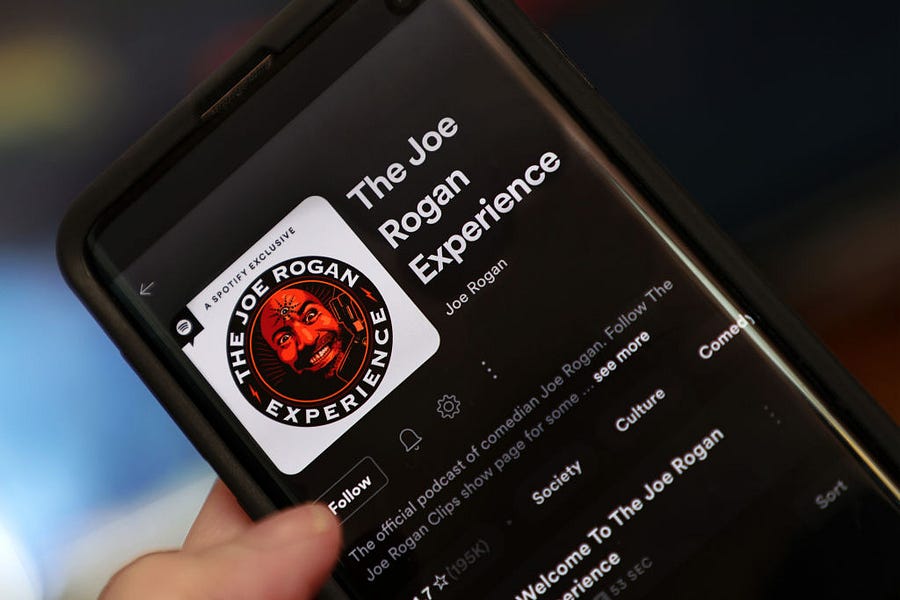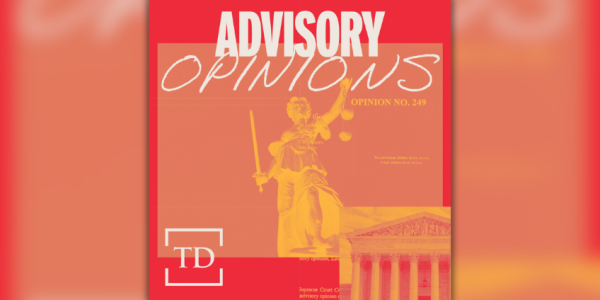I’m going to talk about Joe Rogan, cancel culture, and censorship, but first I want to talk about stun guns. I can’t possibly forget the first time I saw one. I was in college and my friend Greg, who loves gadgets of all kinds, proudly produced his newest purchase. (He called it a taser, but it was a stun gun; it operated by direct contact.)
We were sitting in the Lipscomb University quad and pulled it out of his backpack. “Look at this,” he said. He held up a small black device, pressed a button on its side, and a tiny bolt of electricity appeared between two metal prongs. It made a humming, crackling sound.
“Cool,” I responded. “I wonder what that does to a person.”
“Let’s see,” he said. And he stun-gunned me. He pressed it right against my left leg and pushed the button. It felt like prime-age Mike Tyson had just punched me. The shock of it knocked me right off my seat and straight onto the ground. And it hurt! A lot!
I was furious, but because it knocked the wind out of me, I couldn’t immediately retaliate. I just sat for a moment, on the ground, trying to gather my wits. Greg, meanwhile, cackled like a maniac. And if you think it’s inappropriate to commit assault on a college quad—well, this was the Eighties. There were no rules.
Little did I know on that fateful day in 1988 I had gotten a preview of what American discourse would be like in 2022—when disagreeable speech is all too often met not with conversation but with consequence. And that consequence can be every bit as emotionally shocking as the physical shock from a stun gun.
You don’t have to be a public figure to experience this style of discourse. You can just open your mouth, in person or on social media. Make a good-faith argument that’s disagreeable to someone else, and then comes that shock in response. Usually it’s in the form of a personal insult. Sometimes it combines insults with deception and mischaracterization.
At worst, it can turn into a campaign to fire, harass, or otherwise punish a person for their speech.
Either way, you’re reminded of Ron Burgundy’s immortal words after the bloody street fight between his News Team and the rival news gangs in Anchorman: “Boy, that escalated quickly.”
Over time, individuals grow conditioned. They know which topics bring the pain. They know which audiences carry the stun guns and cattle prods. So you have to make a choice—take the shock, again and again and again, or stay silent.
In this sense, we often face not so much “cancel culture” but “conditioning culture.” You’re trained. This far and no farther. Even when you’re sincere. Even when you hold no animosity in your heart.
And that brings me to Joe Rogan. As many readers know, a number of artists—including Neil Young, Joni Mitchell, and India Arie—have removed their content from Spotify in protest of Rogan’s extraordinarily popular podcast. They’ve objected to Rogan hosting guests who’ve cast doubt on the safety and effectiveness of COVID vaccines.
I’m dissatisfied with much of the discourse around this moment. I don’t think it fits in the cancel culture category, for a simple reason. Joe Rogan can’t be canceled. He has 11 million listeners. He’s got far more real power than anyone who has removed their music or content from Spotify. Arguably, the people who’ve removed their work have hurt themselves more than they’ve hurt Rogan.
And if they disagree with Rogan, they’re free to refuse to share a platform with him. Their stand is also a form of speech. And if the stand is a matter of thoughtful conscience, I can respect it. They’re paying a cost for their beliefs. If the goal, however, is to punish—to gather sufficient momentum until they can collectively inflict a degree of pain on Rogan until he bends to their will, then it’s part of the American problem.
At the risk of being overly formalistic, I think we can place our national discourse into three rough cultural buckets: cancel culture, conditioning culture, and conversation culture. The third is healthy. The first two are toxic.
Cancel culture gets all the headlines. A proper definition of cancel culture refers to incidents where people face concrete, tangible real-world punishments for speech that’s generally within the American mainstream but offends a powerful American constituency.
Cancel culture incidents are often sensational and extreme, and they can pop up on both the left and the right. But the vast, vast majority of Americans will never experience it. They see it. They’re worried about it. But they’re just not going to face job loss for their political or religious opinions.
Conditioning culture, however, is far more common. Conditioning culture is characterized by the use of whatever platform a person has to inflict some form of negative consequence on speakers who engage in speech they despise. Indeed, individuals who engage in almost any amount of commentary or conversation about politics tend to experience at least some level of attempted conditioning.
This is the culture of insults and cruelty. You see it in everything from the Twitter gang-tackle to a stinging drive-by insult in a comments section after you’ve posted your best thoughts about a complex issue.
Conditioning culture shuns persuasion as a tool. That’s too hard. That takes too long. Because we’re human, and we know insults hurt ourselves, we presume they hurt others. So that’s where we turn.
Even worse, we see it work. Only the most hard-hearted and toxic people actually thrive on hatred. Normal individuals recoil from it. Normal individuals suffer from it. They’re not truly silenced in the sense that they’re deprived of their platforms, but they self-censor. Their speech isn’t worth the pain.
Conversation culture is the better way. As a matter of law, I have a right to use my voice to try to cancel. I have a right to use my voice to try to condition. But I should choose to use my voice to converse. And I’ve spoken to enough Joe Rogan fans to know that’s exactly why they like him. He tries to converse.
And converse he does. He brings an eclectic mix of guests on his show and simply sits and talks with them, often for three hours at a time. You read that correctly. He hosts three-hour conversations, and he has 11 million listeners. People are hungry for something different. They’re starving for an alternative to the furious discourse online. Rogan’s giving them what they want and need.
Here at The Dispatch we operate with a slightly smaller audience than Rogan, but we also try to converse. (Perhaps our podcasts are too short? Should Sarah and I extend Advisory Opinions by four additional hours per week?) And the more difficult the issue you attempt to discuss, the more likely you are that you’re going to tread on dangerous rhetorical ground.
A commitment to conversation culture is difficult because it includes a commitment to a basic level of tolerance (a willingness to hear ideas that might offend) and a basic level of openness (a willingness to acknowledge that you might be wrong).
I don’t for a moment think that all the critiques against Rogan reflect conditioning culture—the effort to shock, mock, or otherwise inflict pain on him until he yields. And I don’t think Rogan thinks so either. In a video statement posted to Instagram, Rogan expressed zero animosity against his critics and discussed various ways he can make his show better in response to criticism.
Rogan’s response was good-spirited and gracious. In that moment, he modeled what it looks like to be open to critique. It was the opposite of the “punch back, hard” approach taken by so very many Americans when they feel they’re under fire.
Whether you’re a popular podcaster, a political pundit, or a person who simply wants to share what they think, a commitment to conversation culture requires you to walk a hard path. You have to be tough enough to refuse to be conditioned into compliance but open enough to acknowledge when you’re wrong. And when you’re shocked in our stun gun culture, resist the urge to shock right back.







Please note that we at The Dispatch hold ourselves, our work, and our commenters to a higher standard than other places on the internet. We welcome comments that foster genuine debate or discussion—including comments critical of us or our work—but responses that include ad hominem attacks on fellow Dispatch members or are intended to stoke fear and anger may be moderated.
You are currently using a limited time guest pass and do not have access to commenting. Consider subscribing to join the conversation.
With your membership, you only have the ability to comment on The Morning Dispatch articles. Consider upgrading to join the conversation everywhere.